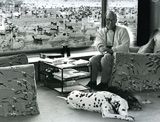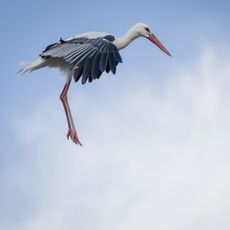2014 marks WWT anniversary
This month marks the anniversary of influential research into swan behaviour which led to the creation of the Wildflowl and Wetlands Trust


January 2014 marks the 50th anniversary of the start of the Scott family's ground-breaking research into swan behaviour, which has influenced scientists the world over. In January 1964, an 11-year-old Dafila Scott and her family watched an unusual-looking swan land on the lake next to their house at Slimbridge, Gloucestershire. The next day, another, but with a differently marked bill, arrived, and, by March, there were 24, again all with slightly different bill markings. The following winter, the family recognised some of these Bewick's swans returning to their lake, now the nucleus of the Wildfowl and Wetlands Trust (WWT) founded by Dafila's father, the naturalist and artist Sir Peter Scott.
Then, little was known about the breeding habits and migratory patterns of wild swans. Sir Peter, who always found a way to make research fun and interesting, realised that tracking individual birds (and giving them names) would yield more valuable results than gazing up at flocks in the sky. He painted them, his wife photographed them and Dafila spent her Christmas holidays helping to draw the different beak patterns, which are as unique as human fingerprints. Now a zoologist and artist in her own right (www.dafilascott.co.uk), she became the first person to complete a PhD on Bewick's swans at Cambridge.
‘It's usually a lovely, sunny, frosty day when the first influx of birds circles over Slimbridge, and it's such an exciting time, seeing old friends coming back,' she says. ‘Of course, you have favourites. I had a pair under my bedroom window called Peasant and Gypsy, which my father painted for me-I've still got the picture. Later on, there were Leo and Stella. They returned one beautiful Christmas Day morning with four cygnets-the best Christmas present I've ever had.' More than 300 Bewick's swans now fly some 2,500 miles from the frozen tundra of northern Russia to spend the winter at Slimbridge-this month, lead researcher Julia Newth expects to record and name the study's 10,000th Bewick's swan-and thousands more arrive on the Ouse Washes in Norfolk.
However, Miss Scott adds that the swan study, in which the birds are now satellite tagged-in the early days, their tail feathers were dyed-and X-rayed to see how much lead shot they're carrying, has never been more important because the birds have been in decline for the past decade. Unlike their forebears 50 years ago, they will face wind turbines and power lines and, despite being protected by law in every country they fly over, 23% of swans X-rayed are found to have been shot. The WWT runs daily floodlit swanfeeding sessions (at 4pm) until December 23 at Slimbridge and you can adopt a Bewick's swan for £5 a month-Coddle, Smiles and Butterbur are among those looking for love (01453 891900; www.wwt.org.uk).
Image: Sir Peter Scott, pioneer of wildfowl research, beside ‘Swan Lake' at Slimbridge, courtesy of the WWT
* Follow Country Life magazine on Twitter
* Subscribe to Country Life magazine and save up to 40%
Sign up for the Country Life Newsletter
Exquisite houses, the beauty of Nature, and how to get the most from your life, straight to your inbox.
Country Life is unlike any other magazine: the only glossy weekly on the newsstand and the only magazine that has been guest-edited by HRH The King not once, but twice. It is a celebration of modern rural life and all its diverse joys and pleasures — that was first published in Queen Victoria's Diamond Jubilee year. Our eclectic mixture of witty and informative content — from the most up-to-date property news and commentary and a coveted glimpse inside some of the UK's best houses and gardens, to gardening, the arts and interior design, written by experts in their field — still cannot be found in print or online, anywhere else.
-
 A well-connected rural playground with 23 acres on the edge of the South Downs National Park
A well-connected rural playground with 23 acres on the edge of the South Downs National ParkOld House Farm is an impressive family home with a wealth of amenities that would inspire any rural passion.
By Arabella Youens Published
-
 The UK gets its first ‘European stork village’ — and it's in West Sussex
The UK gets its first ‘European stork village’ — and it's in West SussexAlthough the mortality rate among white storks can be up to 90%, the future looks rosy for breeding pairs in southern England.
By Rosie Paterson Published
